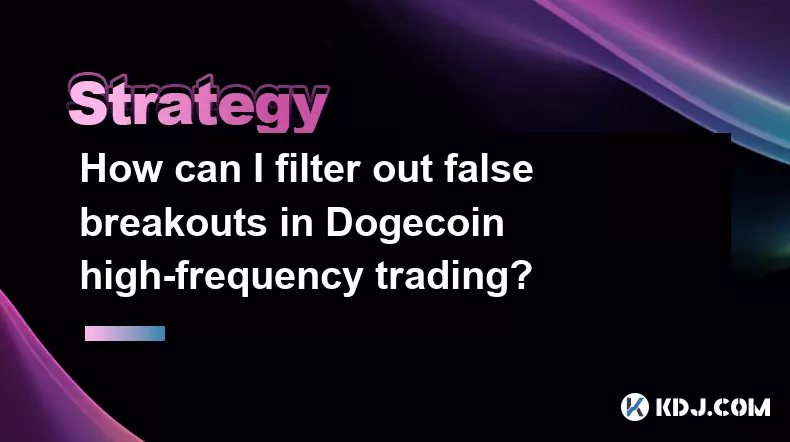-
 bitcoin
bitcoin $112195.049338 USD
2.42% -
 ethereum
ethereum $4124.915858 USD
2.81% -
 tether
tether $1.000570 USD
0.02% -
 xrp
xrp $2.861568 USD
2.25% -
 bnb
bnb $1000.346670 USD
3.04% -
 solana
solana $209.070819 USD
3.38% -
 usd-coin
usd-coin $0.999870 USD
0.02% -
 dogecoin
dogecoin $0.235379 USD
2.65% -
 tron
tron $0.335681 USD
-0.20% -
 cardano
cardano $0.803501 USD
3.38% -
 hyperliquid
hyperliquid $47.120881 USD
3.56% -
 chainlink
chainlink $21.501300 USD
3.44% -
 ethena-usde
ethena-usde $1.000571 USD
0.02% -
 avalanche
avalanche $29.793378 USD
3.62% -
 stellar
stellar $0.366964 USD
2.42%
Can changes in the number of Dogecoin holding addresses predict trends?
A rising number of Dogecoin holding addresses signals growing network engagement, but distinguishing between organic adoption and speculative spikes is key to assessing true demand.
Sep 20, 2025 at 11:00 am

Understanding Dogecoin Holding Addresses
1. The number of active Dogecoin holding addresses serves as a key metric in assessing network engagement. An increasing count often reflects growing interest from both retail and institutional participants. When more wallets hold DOGE over time, it suggests accumulation behavior rather than short-term trading.
2. Sudden spikes in new addresses may coincide with viral social media campaigns or celebrity endorsements. These events tend to trigger FOMO (fear of missing out), driving speculative inflows. However, such surges don't always translate into sustained price momentum if the new holders are not actively participating in transactions.
3. A steady rise in unique addresses correlates with broader adoption trends. This includes usage on tipping platforms, e-commerce integrations, or remittance channels. Unlike transient hype cycles, consistent growth in holder numbers indicates organic demand.
4. Declining address counts can signal loss of confidence or migration to other networks. If large wallets move DOGE to exchanges followed by a drop in active addresses, it might precede downward pressure on price due to increased sell-side liquidity.
5. On-chain analytics firms track these movements using blockchain explorers and proprietary algorithms. They differentiate between dormant wallets, active traders, and long-term holders to assess whether address growth is meaningful or superficial.
Accumulation Patterns vs. Market Sentiment
1. Large increases in holding addresses during price consolidation phases often indicate accumulation. Investors buy while volatility is low, anticipating future rallies. This behavior is observable through clustering analysis of wallet activity and transaction frequency.
2. Conversely, rapid address growth during sharp price pumps may reflect speculative mania. In such cases, many new entrants purchase at elevated levels, increasing the likelihood of profit-taking once momentum stalls.
3. Long-term holder metrics complement address data. If the number of addresses grows but the percentage of DOGE held for over 12 months remains stable or increases, it reinforces bullish sentiment. Short-duration holdings suggest fragility in market structure.
4. Exchange-based addresses must be filtered out to avoid distortion. Transfers to centralized platforms usually precede selling, so including them in total holder counts can misrepresent true ownership distribution.
5. Whale movements significantly influence perception. A single entity acquiring millions of DOGE across multiple addresses can artificially inflate holder statistics without reflecting widespread participation.
Historical Correlations and Limitations
1. During the 2021 bull run, Dogecoin’s holder count surged past 1 million, aligning with its all-time high price. The correlation suggested that expanding user base supported valuation, though external factors like Tesla’s payment acceptance plans played a role.
2. In 2022, despite relatively stable address growth, DOGE prices declined due to macroeconomic tightening. This divergence highlights how on-chain metrics alone cannot override systemic risks such as rising interest rates or regulatory scrutiny.
3. Address count stagnation during bear markets doesn’t necessarily imply disinterest. Many holders practice 'HODLing,' reducing transaction activity while retaining assets. Network dormancy can mask underlying strength.
4. Data accuracy depends on transparency of wallet identities. Since Dogecoin uses a transparent ledger but allows pseudonymity, tracking unique individuals versus bots or duplicate wallets introduces estimation errors.
5. Alternative indicators like transaction volume, hash rate, and exchange inflows provide context. Relying solely on address growth risks overlooking distribution concentration or illiquid supplies controlled by few entities.
Frequently Asked Questions
What tools can monitor Dogecoin address changes?Blockchain explorers like Blockchair and analytical platforms such as Glassnode offer real-time dashboards for tracking active addresses, supply distribution, and movement patterns specific to Dogecoin.
Do inactive addresses affect trend predictions?Yes. Millions of DOGE sit in old wallets untouched for years. If these suddenly become active, they can disrupt supply-demand equilibrium. Analysts use metrics like 'dormant supply' to account for this risk.
How does Dogecoin's address growth compare to other memecoins?Relative to Shiba Inu or Pepe, Dogecoin maintains higher absolute address counts due to earlier launch and brand recognition. However, newer tokens sometimes show faster percentage growth during hype cycles.
Can fake addresses manipulate the data?While creating dummy addresses is technically possible, moving significant volumes requires capital. Meaningful manipulation would demand substantial investment, making it economically unfeasible for sustained deception.
Disclaimer:info@kdj.com
The information provided is not trading advice. kdj.com does not assume any responsibility for any investments made based on the information provided in this article. Cryptocurrencies are highly volatile and it is highly recommended that you invest with caution after thorough research!
If you believe that the content used on this website infringes your copyright, please contact us immediately (info@kdj.com) and we will delete it promptly.
- SWIFT, Consensys, and Blockchain Settlement: A New Era for Global Finance?
- 2025-09-30 06:25:13
- Gold Dollar Coin, Mystery, Upright 5: Unearthing Hidden History and Whale-Sized Speculation
- 2025-09-30 06:25:13
- Meme Coins, Smart Money, 2025 Riches: Navigating the Hype
- 2025-09-30 06:30:01
- VeChain (VET) Price Prediction 2026: Bullish Breakout or Enterprise Stalemate?
- 2025-09-30 06:30:01
- BetFi Coin: Is This the Next High-ROI Crypto Presale?
- 2025-09-30 06:30:01
- Bitcoin, Nvidia, and the Potential Upside: Lessons from the AI Boom
- 2025-09-30 06:30:15
Related knowledge

Practical parameter settings for a Bitcoin multi-timeframe moving average system
Sep 18,2025 at 10:54pm
Optimizing Timeframe Combinations for Bitcoin Trading1. Selecting appropriate timeframes is crucial when building a multi-timeframe moving average sys...

How can I filter out false breakouts in Dogecoin high-frequency trading?
Sep 22,2025 at 01:00am
Understanding False Breakouts in Dogecoin Trading1. A false breakout occurs when Dogecoin's price appears to move beyond a defined support or resistan...

Techniques for identifying tops and bottoms in the Bitcoin on-chain NVT model
Sep 20,2025 at 07:54pm
Understanding the NVT Model in Bitcoin Analysis1. The Network Value to Transactions (NVT) ratio is often described as the 'P/E ratio' of the cryptocur...

What does the surge in open interest in Bitcoincoin futures mean?
Sep 20,2025 at 11:18pm
Understanding the Surge in Dogecoin Futures Open Interest1. A surge in open interest within Dogecoin futures indicates a growing number of active cont...

How can I use the Ethereum USDT premium to gauge market sentiment?
Sep 18,2025 at 11:55pm
Understanding the Ethereum USDT Premium1. The Ethereum USDT premium refers to the price difference between USDT (Tether) traded on Ethereum-based plat...

What should I do if Ethereum staking yields decline?
Sep 20,2025 at 06:18am
Understanding the Causes Behind Declining Ethereum Staking Yields1. The Ethereum network transitioned to a proof-of-stake consensus mechanism with the...

Practical parameter settings for a Bitcoin multi-timeframe moving average system
Sep 18,2025 at 10:54pm
Optimizing Timeframe Combinations for Bitcoin Trading1. Selecting appropriate timeframes is crucial when building a multi-timeframe moving average sys...

How can I filter out false breakouts in Dogecoin high-frequency trading?
Sep 22,2025 at 01:00am
Understanding False Breakouts in Dogecoin Trading1. A false breakout occurs when Dogecoin's price appears to move beyond a defined support or resistan...

Techniques for identifying tops and bottoms in the Bitcoin on-chain NVT model
Sep 20,2025 at 07:54pm
Understanding the NVT Model in Bitcoin Analysis1. The Network Value to Transactions (NVT) ratio is often described as the 'P/E ratio' of the cryptocur...

What does the surge in open interest in Bitcoincoin futures mean?
Sep 20,2025 at 11:18pm
Understanding the Surge in Dogecoin Futures Open Interest1. A surge in open interest within Dogecoin futures indicates a growing number of active cont...

How can I use the Ethereum USDT premium to gauge market sentiment?
Sep 18,2025 at 11:55pm
Understanding the Ethereum USDT Premium1. The Ethereum USDT premium refers to the price difference between USDT (Tether) traded on Ethereum-based plat...

What should I do if Ethereum staking yields decline?
Sep 20,2025 at 06:18am
Understanding the Causes Behind Declining Ethereum Staking Yields1. The Ethereum network transitioned to a proof-of-stake consensus mechanism with the...
See all articles


























![[Pycoin] PI Coin -Shocking Listance of Pycoin?! 'Rebellion' This time ... Pay attention to #paikoin [Pycoin] PI Coin -Shocking Listance of Pycoin?! 'Rebellion' This time ... Pay attention to #paikoin](/uploads/2025/09/29/cryptocurrencies-news/videos/pycoin-pi-coin-shocking-listance-pycoin-rebellion-time-pay-attention-paikoin/68da82f23cec1_image_500_375.webp)















































